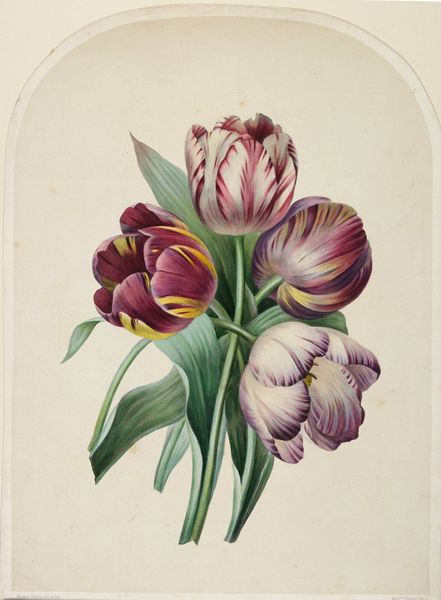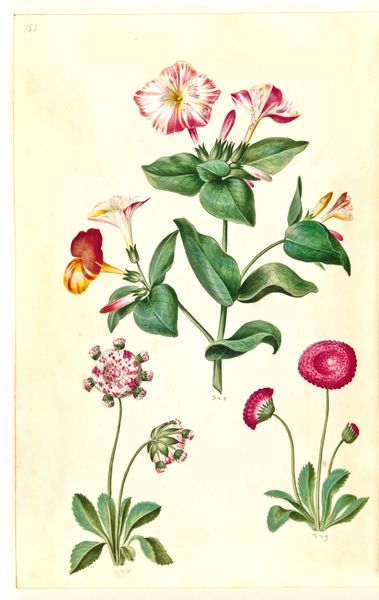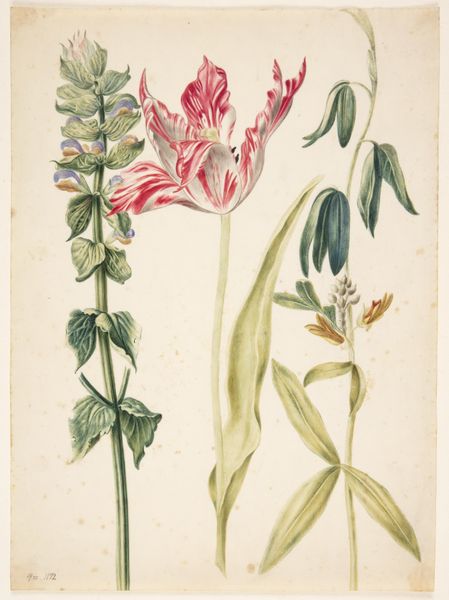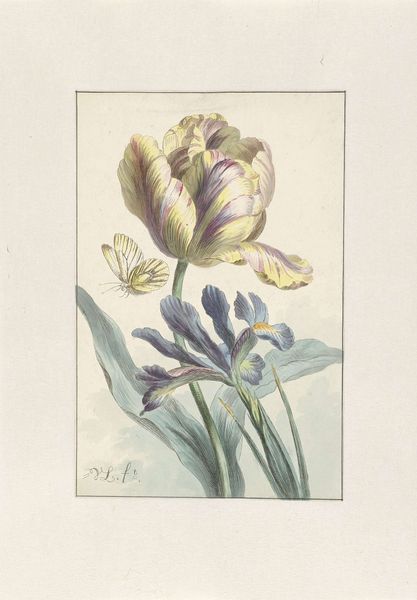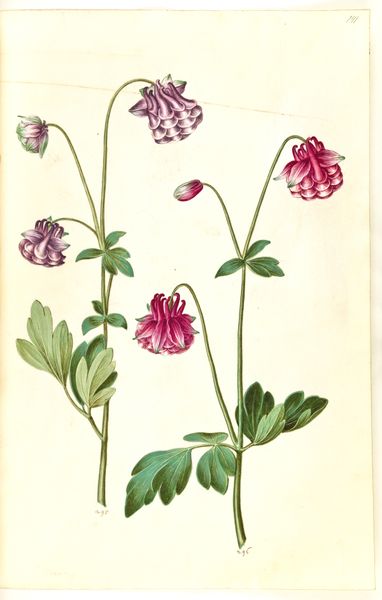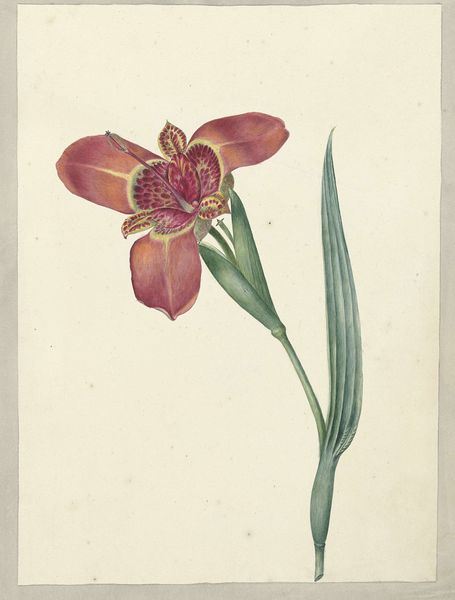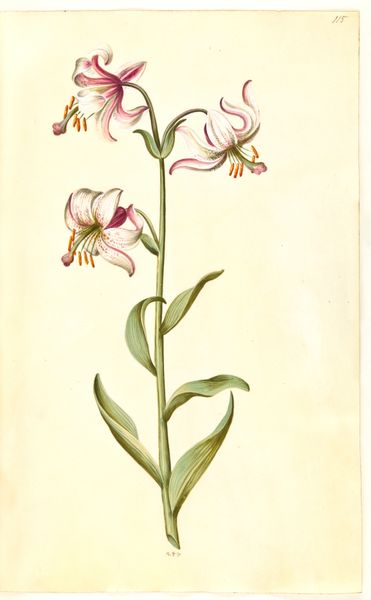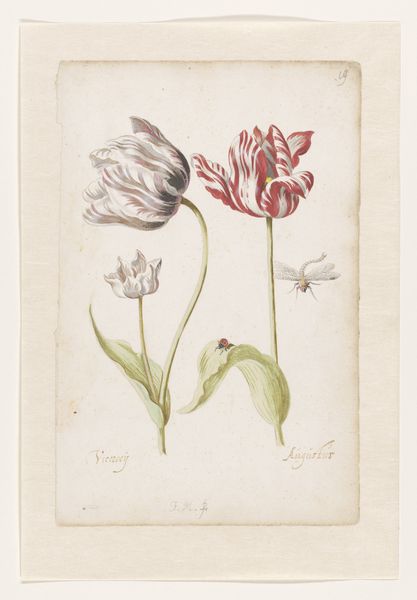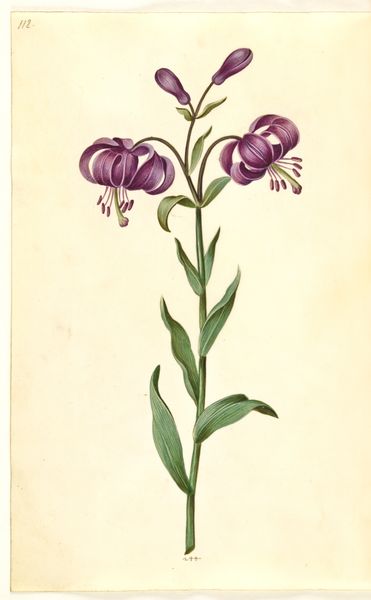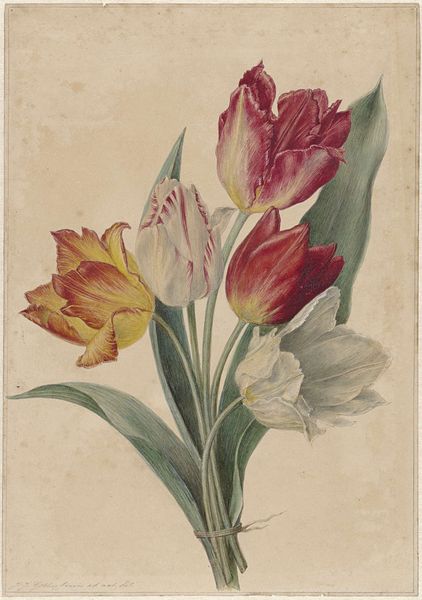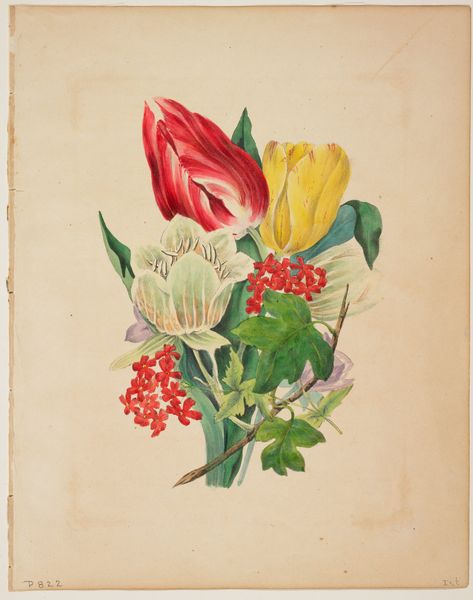
drawing, painting, print, paper, watercolor
#
drawing
#
painting
# print
#
paper
#
watercolor
#
watercolour illustration
#
botanical art
#
watercolor
Dimensions: 12 3/4 x 10 1/4 in. (32.39 x 26.04 cm) (plate)
Copyright: Public Domain
Curator: What strikes me immediately about this work, entitled "Various Tulips", made around 1791, is the artist's incredibly detailed rendering of the tulip petals using watercolor. There’s a meticulousness here that almost feels scientific. Editor: Yes, there's a clinical quality. I find the contrast between the sharp lines defining the veins of the petals and the soft wash of the watercolors intriguing. It creates a slightly unsettling beauty, wouldn't you agree? Curator: Unsettling in what sense? In the late 18th century, botanical illustrations like this one played a key role in scientific exploration and categorization. Tulips, particularly, were objects of intense fascination and economic speculation during the Dutch Golden Age. Editor: I'm more drawn to the purely visual impact. The almost unnatural striations and gradients on those petals… it verges on the abstract despite its representational intent. The color harmony too—those muted greens offsetting the almost aggressively patterned flowers. It is beautiful yet very unusual. Curator: These meticulously rendered paintings served as vital records and tools of communication in a period when global exploration dramatically increased European understanding of the natural world. The style served specific aims within the intellectual landscape of its time. Editor: Yet looking beyond its historical function, the formal aspects still provide insight. For example, there's an almost perverse delight in capturing the delicate structure that seems to transcend function; it suggests that this particular painter's motivation stretched beyond mere taxonomy. The composition, off-centered and seemingly cropped, adds tension. Curator: Indeed. It shows the interesting intersections of botanical exploration, commercial cultivation, and artistic representation of the natural world in that historical moment. The distribution and exchange of these tulip specimens greatly influenced global markets and scientific advancements of the time. Editor: It definitely speaks to an era grappling with order and categorization in nature. The beauty exists despite that structure—or maybe enhanced by it. Thank you for clarifying those wider aspects that give deeper resonances. Curator: It was a pleasure examining these tulips through our different lenses, seeing how societal trends and unique aesthetic vision might intertwine and affect an artwork's many lives.
Comments
No comments
Be the first to comment and join the conversation on the ultimate creative platform.

